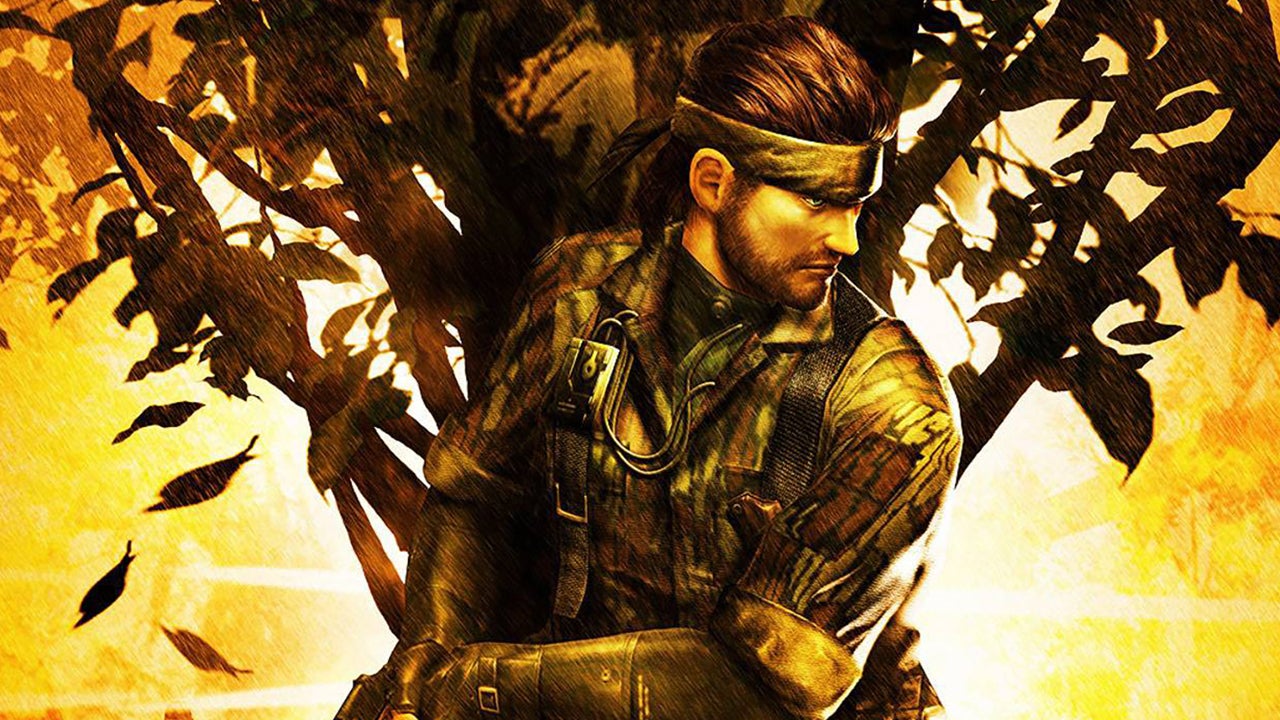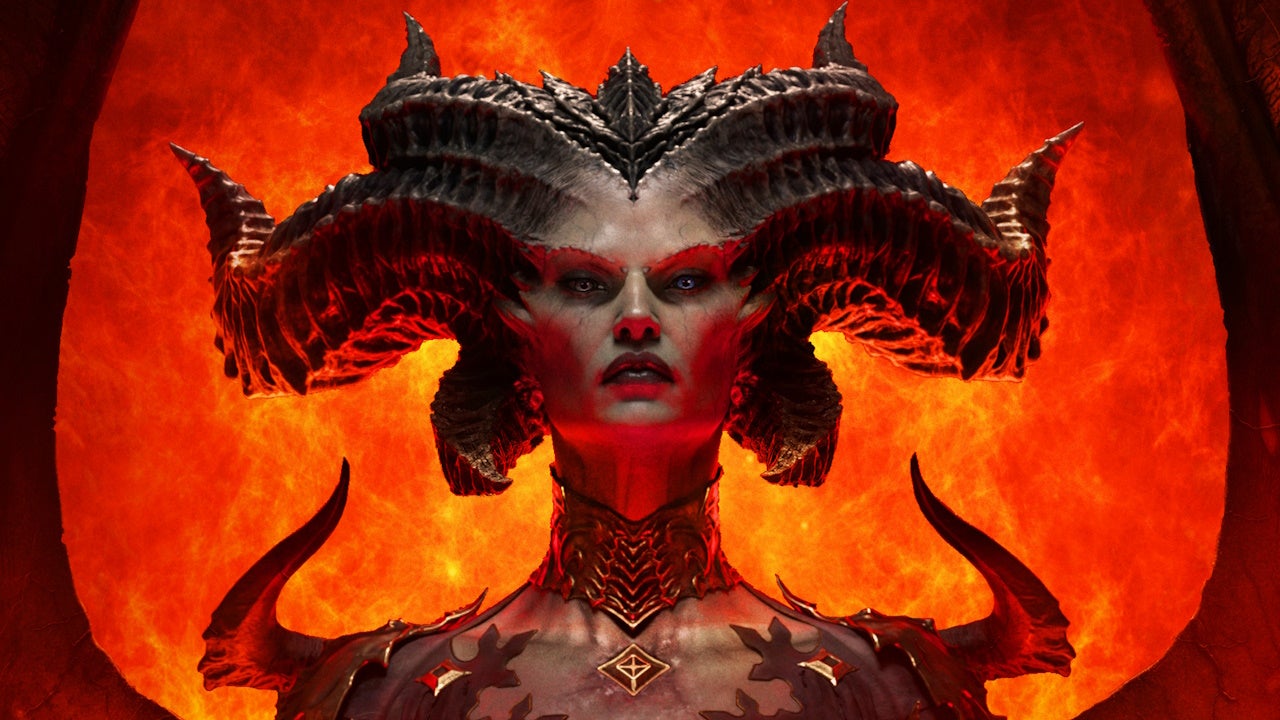Warning: This article contains spoilers for Metal Gear Solid 3 and Metal Gear Solid 4.
It’s been a long time coming but Metal Gear fans finally have something concrete to look forward to. Although series creator Hideo Kojima has moved on to other projects, his long-beloved stealth action franchise is making a grand return to the forefront of gaming with Metal Gear Solid Delta: Snake Eater. Now that we have our first look at Delta’s gameplay from the new trailer shown at the Xbox Games Showcase, we’re even more excited to get our hands on it. But for now, we want to take a look back at the original Metal Gear Solid 3, which will celebrate its 20th anniversary this year on November 17th, 2004.
Specifically, we’re going to talk about how MGS3 tells a more vital prequel narrative than most other franchises can match. What was at the time seen as a course correction from Metal Gear Solid 2’s lack of Solid Snake playtime and perhaps even a delaying action of paying off 2’s narrative threads to the eventual Metal Gear Solid 4, the benefit of hindsight has shown that MGS3 is a critical installment in the series’ mythology. Sure, it received great reviews on release, but why does the story not really work if you just played MGS1, 2 and 4 as a trilogy when they happen in chronological order? Let’s take a look at what makes MGS3 so essential.
A New Mission
After two games set in a “few years in the future” sci-fi setting, Kojima went in an entirely new direction with Metal Gear Solid 3. The mechanics and systems he used to create such iconic stealth action gameplay in MGS1 and 2 could have been iterated on to even greater success, but 3 made the bold leap of developing new ways to engage with the genre. From the camo index system where players had to adjust their disguise to match their surroundings, needing to hunt for food in the wild to keep up stamina, curing serious injuries in the field, and depriving players of many of the futuristic gadgets that were so helpful in previous games, MGS3 forced fans to rethink their strategies as they explored the Soviet jungle in pursuit of objectives.
The mission took players through a variety of exotic locations and exciting sequences, with the Shagohod chase in particular being one of the best action set pieces on the PlayStation 2. Yet if the Metal Gear franchise is known for anything gameplay wise besides stealth, it’s a penchant for creative boss fights against bizarre villains, and MGS3 has one of the best rogue’s galleries in the franchise. The Cobra Unit were incredibly expressive both in visual design and how they let the ways they fought give players an insight into their personalities instead of each one telling an elaborate backstory as they died. The bosses interacted with the new gameplay systems, such being able to use camo to hide from The Fury, or tricky players giving The Fear food poisoning using rotten food to quickly drain his stamina. The crown jewel of the Cobra fights was The End, which used a massive environment and all the game’s stealth mechanics to create a proper sniper’s duel that for some players went on for over an hour.
Kojima’s talent for merging story and gameplay reaches its peak in the game’s final encounter: the battle between Snake and The Boss. With only 10 minutes before the arena is bombed to smithereens, all of the skills players developed over the course of the journey, especially in regards to sneaking and CQC, are tested as they try to defeat Snake’s old mentor. The white flowers and trees of the arena matching The Boss’ outfit, the slow build up of the Snake Eater theme song as the timer winds down, and forcing the player to push the button to deliver the final shot during what appears to be a cutscene all coalesce to form one of the most artistically resonant final battles in game history. The design template Kojima used in previous games is expanded and refined into its purest form in MGS3, making the game a fitting prequel not just in story, but also in gameplay.
In Love and (Cold) War
Set in 1964, Metal Gear Solid 3: Snake Eater is, at first glance, a back to basics take on the Metal Gear series. Snake is back in the lead role, albeit technically not the same one as previous games, with the protagonist instead being the original Snake, aka Big Boss, whose DNA was used to create the clones Solid, Liquid and Solidus. The setup is essentially classic MGS action but in the jungle, and with a 007-style spy thriller/romance angle added on top. The complicated philosophical concepts and labyrinthine bad guy plans from MGS2 are dropped for a more straightforward Cold War story about Snake trying to stop a nuclear war from breaking out, while also dealing with his relationships with his apparently traitorous mentor, The Boss, and his budding maybe-maybe-not romance with his spy companion EVA.
What some likely took as an artistic retreat from Kojima into less controversial territory has instead revealed itself over the years to be a conscious addition of key emotional context to what had become a sprawling multi-decade saga. Trying to connect all the various threads of MGS lore and the political machinations of dozens of characters and factions can be a dizzying prospect, but MGS3 cuts through the chaff and reminds the audience that these are stories not just about nations and lofty ideas but about characters, ones who MGS3’s script mines for a surprising amount of depth. At the center of it all is Snake, a man and soldier still holding onto the last of his ideals, only to lose all of it as he “succeeds” in the mission that would break both him and his hope in his country.
His battles with The Boss, who is revealed to not be a traitor but instead a patriot allowing her reputation to be destroyed in order to preserve world peace, shatter Snake’s faith in everything he’d ever been led to believe in. Meanwhile, his romance with EVA turning out to be a ruse to pilfer him of the Philosopher’s Legacy ruins his ability to put trust in anyone besides his fellow soldiers. These two relationships crumbling not only gives an answer as to why he eventually becomes Big Boss, the villain of the original two Metal Gear games on the MSX2, but also establishes that the recurring theme of soldiers being betrayed by their governments and wanting to build nations of their own that had been one of the central running motifs of the series, has a foundation that goes beyond the conflict fans were already familiar with. Even before Solid Snake was born, this was just a fact of this world, and cementing that world is what makes MGS3 so crucial to its immediate successor.
A Solid Circle
Besides telling its own story, MGS3 also adds important definition to the world of Metal Gear that helps solidify (hah) the plot threads that MGS4 would conclude. Sure, in timeline order, MGS4 is technically a sequel to MGS2. But when looking at the actual meat of plot and world-building, MGS3 is the game that most informs MGS4. We’re talking about more than basic stuff like learning about the Shagohod, which was the genesis from which Metal Gear technology would later develop, or introducing the character of Big Boss to series fans who never played the original two MSX games (which, let’s be honest, is most of them). MGS4 only works as an ending to the saga because of how it builds off of MGS3’s themes and characters.
The idea that the conflicts between soldiers and their governments that led Big Boss and other Metal Gear villains into wanting to establish some version of Outer Heaven are cyclical across history only sells if we’ve actually seen that conflict, well, across history. The reveal that EVA is the one who gave birth to Solid and Liquid and truly did love Big Boss despite her betrayal would come out of nowhere without us becoming invested in her in MGS3. And without getting to know them when they were young and charismatic, the twist that the Patriots, the ultimate villains of the entire Metal Gear saga, were in fact the mission support team who helped the original Snake (and by extension, the player) in the 1960s wouldn’t register as such a tragic gut-punch.
Sure, there are worthwhile prequels that fill in lore gaps or recontextualize aspects of plot or character: Rogue One, Andor, Better Call Saul, House of the Dragon, and Furiosa to name a recent few. But what makes MGS3 stand out from the pack is that in most other cases, later stories in the timeline work perfectly well on their own without the prequel material. Metal Gear stories set after MGS3, such as MGS4, MGS5 or Peace Walker, don’t really function dramatically without knowing the story from MGS3. Nothing that happens in MGS3 is a “bonus”; it is the beating heart of a saga Kojima had been telling across numerous games since 1987. It is the connective tissue that brings the original MSX games, the early Solid series, and the final entries together into a single whole. That it’s also an excellent title on its own terms, full of some of the series’ most exciting action set pieces and strongest character work, only further cements its status as the greatest prequel ever made.
Carlos Morales writes novels, articles and Mass Effect essays. You can follow his fixations on Twitter.










